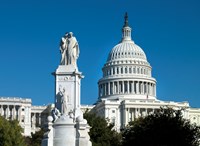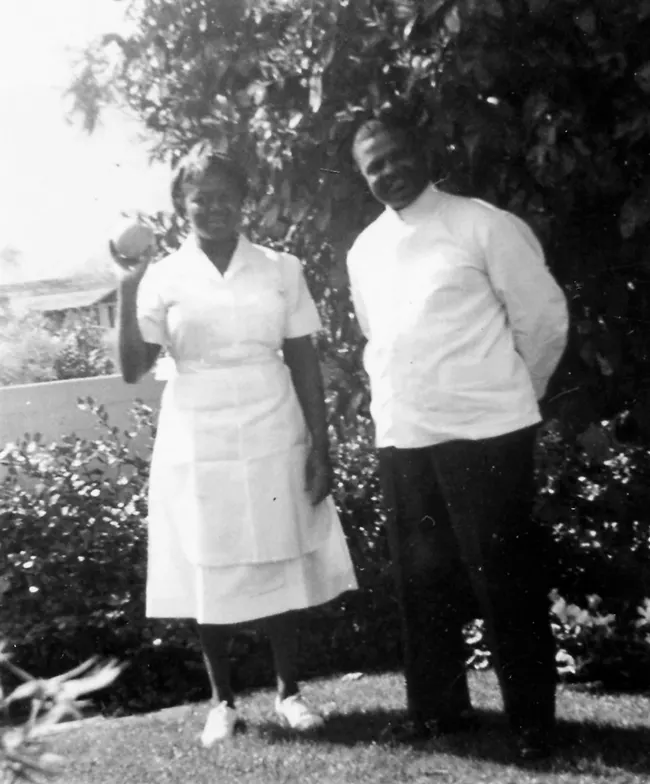- Acadia National Park (2)
- Cape Hatteras National Seashore (2)
- Cape Krusenstern National Monument (2)
- Cuyahoga Valley National Park (2)
- Everglades National Park (2)
- Golden Gate National Recreation Area (2)
- Grand Teton National Park (2)
- Homestead National Historical Park (2)
- Point Reyes National Seashore (2)
- Show More ...
Showing 52 results for 442 ...
Piti
- Type: Place

Above the village of Piti, sit three large Japanese Vickers-type Model 3 140mm coastal defense guns, the remains of hastily constructed fortifications build on the eve of the American invasion of Guam. As the Americans conquered more and more territory in the Pacific, the Japanese forced the CHamoru to build fortifications and install artillery and costal defense guns on Guam under brutal conditions.
- Type: Place

The 44-foot high Peace Monument stands in the circle west of the U.S. Capitol at Pennsylvania Avenue and First Street, NW. Inscribed "In memory of the officers, seamen and marines of the United States Navy who fell in defense of the Union and liberty of their country, 1861-1865," this sculptural group has also been called the Naval Monument.
Oral History Interview with Sändra J. Washington
Crater Vent at Capulin Volcano
- Type: Article

Historically jesters were associated with royal courts, not national parks. Yet for a brief period in the late 1950s the National Park Service (NPS) had its own ranger caricature to speak truth to power. Part mountain man stereotype and part voice for field staff, “One Lick R. Evergreen” wore an exaggerated ranger uniform, attended conferences, and submitted comments to NPS newsletters.
Amanda Lanik - Geologist
- Type: Article

By 1920 the National Park Service (NPS) adopted a new emblem—the sequoia cone. Despite its broad use on uniforms, on signs, and in print materials throughout the 1920s and 1930s, not everyone thought that it was a good symbol to represent the diversity of national parks and monuments. By 1940 most—but not all—of its uses as an emblem had ceased. The sequoia cone remains part of the NPS uniform today.
44 Backcountry Camp
- Type: Person

Fred Korematsu was a civil rights leader and pioneer. When the Army forced Japanese Americans into concentration camps during WWII, Fred Korematsu refused to comply with the orders. He was arrested and held in the Presidio Stockade until being sent to the camps. Fred Korematsu fought his conviction and internment with his case making it to the U.S. Supreme Court. Fred Korematsu spent his life fighting against discrimination in the United States.
How to Save a Summit
- Type: Article

At the overlook off the Cadillac West Parking Lot, the group noted fresh areas of erosion in and around stands of rare alpine blueberry and blooming pin cherry. A popular place for watching the sunset, the bedrock slope is also vulnerable to rain storms of increasing intensity. Once plants are damaged, an inch of rain can easily wash away what took decades or centuries to build.
Luke Sconiers
- Type: Person
Luke made his Final Affidavit on March 22, 1884, which stated that he settled on his land in 1875. According to his Testimony of Claimant form, he built a log dwelling, a meat house, and cleared 30 acres of land.
- Type: Article

‘Atmospheric rivers’ and ‘bomb cyclones’ have occupied headlines these past few weeks as significant storms have battered the area, bringing historic rainfall amounts and causing our local creeks to surge. But what exactly do these meteorological terms mean? And what do surging creeks mean for the Coho & Steelhead Monitoring Team and the spawning coho salmon we are trying to monitor?
How Shorebirds Adapt to a Warming Arctic
- Type: Article

Read the abstract and link to a peer-reviewed article on Arctic shorebird adaptations: Shaftel, R., D. J. Rinella, E. Kwon, S. C. Brown, H. R. Gates, S. Kendall, D. B. Lank, J. R. Liebezeit, D. C. Payer, J. Rausch, S. T. Saalfeld, B. K. Sandercock, P. A. Smith, D. H. Ward, and R. B. Lanctot. 2021. Predictors of invertebrate biomass and rate of advancement of invertebrate phenology across eight sites in the North American Arctic. Polar Biology 44: 237-257.
Factors that Affect Habitat and Trophic Ecology of Fishes in Cape Krusenstern National Monument Coastal Lagoons
- Type: Article

Read a summary and get the link to an article on the connectivity between marine environments and coastal lagoons for fisheries. Fraley, K. M., M. D. Robards, M. C. Rogers, J. Vollenweider, B. Smith, A. Whiting, T. Jones. 2021. Freshwater input and ocean connectivity affect habitats and trophic ecology of fishes in Arctic coastal lagoons. Polar Biology: 44, p1401–1414.
- Type: Article

A rehabilitation project to correct seismic structural deficiencies of Alcatraz’s Main Prison Building will be funded by $63.584 million from the Great American Outdoors Act . The Main Prison Building, a contributing structure to the Alcatraz Island National Historic Landmark District, is composed of the central Cellhouse, a Hospital Wing and Administration Wing. Completed work will provide a safe long-term facility for 1.4 million annual visitors and concession, and staff.
Milton Hill
- Type: Person
Milton Hill received Homestead Certificate #650 on March 15, 1873 for 78 acres of which 40 acres were cleared for cultivation. Hill was married with two children and built a house that was 12 x 12 feet, one story, board roof, one door, one window, and a plank floor. In addition to cultivating 40 acres, he fenced about 80 acres; set out an orchard containing over 100 fruits trees; and had a well built stable and corn crib.








